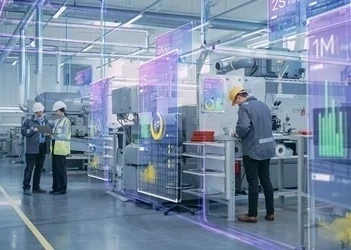Top three differences between process and task mining
How process and task mining differ in scope, goal and the type of data they utilize
Add bookmark
Process mining and task mining are two prominent methods of business analysis. It can be easy to confuse the two or to be unaware of the subtle distinctions that separate them since their name and function are similar.
This article details the difference between tasks and processes and the nature of the data that they utilize in their analysis through process and task mining. We look into the scope and capabilities of each to uncover the top three aspects that differentiate them.
Process and task mining assess different business elements
In order to understand how process and task mining differ, it is first important to understand the distinction between what tasks and processes are in an organizational context.
A task is any individual activity usually completed by an employee at their workstation. This can be sending an invoice, email or issuing a refund.
Processes are wider in scope and generally consist of several individual tasks. For example, the refund process may consist of individual tasks or steps such as assessment of the refund request, checking against company policy and the approval or denial of the refund.
Due to this distinction, the data handled by each is significantly different.
One looks at structured data and the other at unstructured data
Task mining seeks to capture every individual action that is carried out to complete a task, using technologies like optical character recognition and natural language processing to provide context and categorization.
The technology needs to understand every action a user performs whether it is related to the task or not. If an employee spends a few minutes checking social media or replying to personal emails, this needs to be understood and eliminated from the assessment of the task.
The result of measuring so many individual actions and variables and adding context to them is that task mining works with messy and unstructured data. Organizations can label data for example as a customer inquiry or an internal record update so that the nature of the data can be more easily understood.
Process mining operates on event logs that are structured files containing records of event data relating to processes. The data captured and worked with in process mining is therefore well-structured and organized.
These logs generally tend to contain defined, common fields for event data and a timestamp, to ensure processes can be mapped chronologically and temporally.
Related content: Why process mining is the starting point for transformation
The insights they provide lead to different outcomes
The final distinction is the overall goal or scope of process and task mining and what their capabilities are.
Process mining examines the steps in an overall process to understand their flow, how they work together. It helps uncover inefficiencies or bottlenecks and highlight which processes can be optimized or automated.
Due to the granularity of task mining, it is able to delve a little deeper into organizational activities than task mining is. Task mining provides significantly more data due to the number of individual actions that go into completing a process.
While large data sets are intrinsically more difficult to analyze, this level of granularity allows businesses to put organizational activities under the microscope to identify exactly where improvements can be made. Businesses can assess the methods being used for task completion and optimize them by updating systems or implementing new training programs, for example.
Have you uncovered any further distinctions between process and task mining? Let us know in the comments below.













